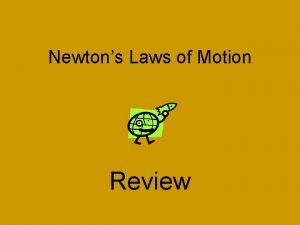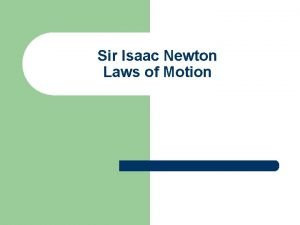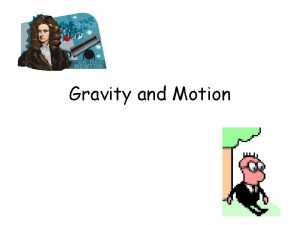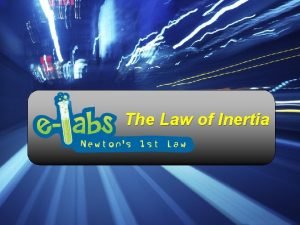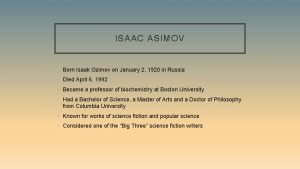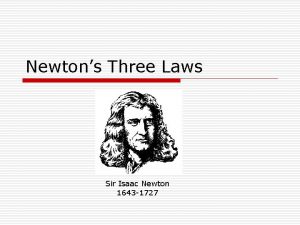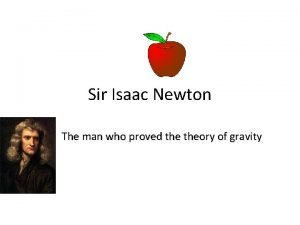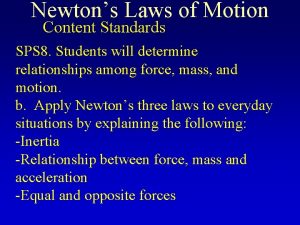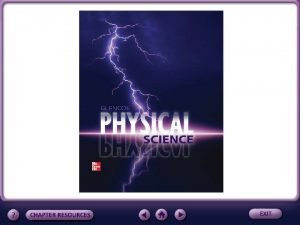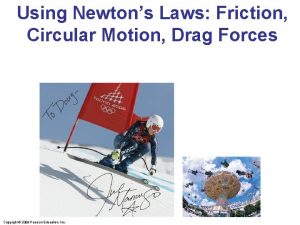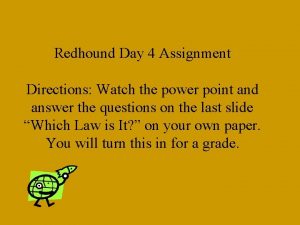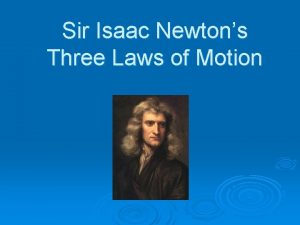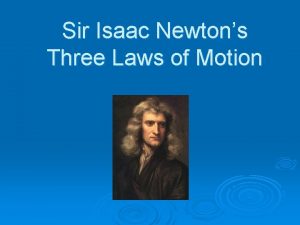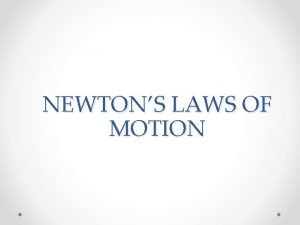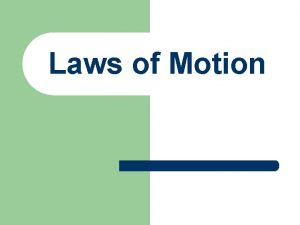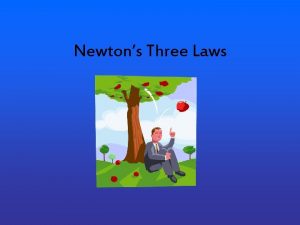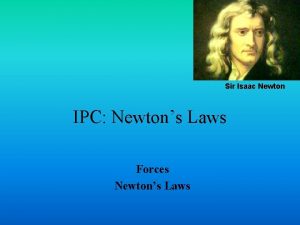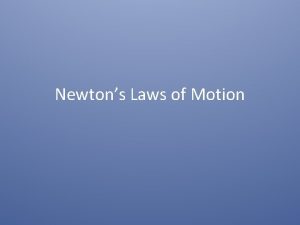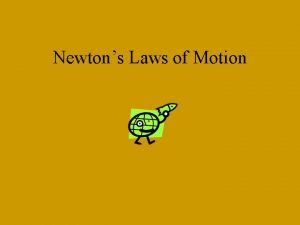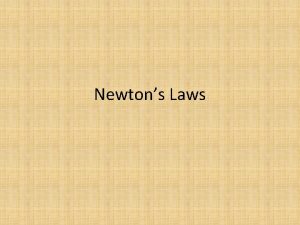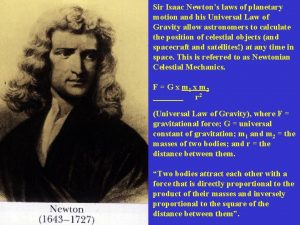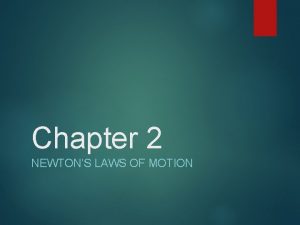Newtons 3 Laws of Motion n Sir Isaac
















- Slides: 16

Newton’s 3 Laws of Motion

n Sir Isaac Newton was one of the greatest scientists and mathematicians that ever lived. He was born in England on December 25, 1643. He was born the same year that Galileo died. He lived for 85 years. Isaac Newton was raised by his grandmother. He attended Free Grammar School and then went on to Trinity College Cambridge. Newton worked his way through college. While at college he became interested in math, physics, and astronomy. Newton received both a bachelors and masters degree. n While Newton was in college he was writing his ideas in a journal. Newton had new ideas about motion, which he called his three laws of motion. He also had ideas about gravity, the diffraction of light, and forces. Newton's ideas were so good that Queen Anne knighted him in 1705. His accomplishments laid the foundations for modern science and revolutionized the world. Sir Isaac Newton died in 1727.

1 st Law n An object at rest will remain at rest unless acted on by an unbalanced force. An object in motion continues in motion with the same speed and in the same direction unless acted upon by an unbalanced force. n This law is often called "the law of inertia".

What does this mean? . This means that there is a natural tendency of objects to keep on doing what they're doing. All objects resist changes in their state of motion. In the absence of an unbalanced force, an object in motion will maintain this state of motion


n What is the motion in this picture? What is the unbalanced force in this picture? What happened to the skater in this picture?

n This law is the same reason why you should always wear your seatbelt.

2 nd Law n Acceleration is produced when a force acts on a mass. The greater the mass (of the object being accelerated) the greater the amount of force needed (to accelerate the object).

What does this mean? n Everyone unconsciously knows the Second Law. Everyone knows that heavier objects require more force to move the same distance as lighter objects. n FORCE = MASS times ACCELERATION

OUCH!!

FUN!

3 rd Law n For every action there is an equal and opposite re-action.

What does this mean? n This means that for every force there is a reaction force that is equal in size, but opposite in direction. That is to say that whenever an object pushes another object it gets pushed back in the opposite direction equally hard.

n Let's study how a rocket works to understand Newton's Third Law. n The rocket's action is to push down on the ground with the force of its powerful engines, and the reaction is that the ground pushes the rocket upwards with an equal force.

n Up, and Away!

Quiz n 1. Who was the scientist who gave us the Laws of Motion? 2. How many Laws of Motion are there? 3. What is another name for the first law of motion? 4. Which law explains why we need to wear seatbelts? 5. Which law says that force is equal to mass times acceleration (F=MA)? 6. Which law says that heavier objects require more force than lighter objects to move or accelerate them? 7. Which law explains how rockets are launched into space? 8. Which law says that for every action there is an equal and opposite reaction?
 3 law
3 law What are newtons 3 laws
What are newtons 3 laws Newton three law of motion
Newton three law of motion Colin skateboards down the sidewalk
Colin skateboards down the sidewalk 3 laws of motion by isaac newton
3 laws of motion by isaac newton Newton's second law example
Newton's second law example Isaac chewed pen
Isaac chewed pen Life inertia
Life inertia Sir isaac asimov
Sir isaac asimov What are newton's three laws of motion
What are newton's three laws of motion Oppisite of sir
Oppisite of sir 6 67 x 10^-11
6 67 x 10^-11 Newton's laws of motion
Newton's laws of motion Abcd8n
Abcd8n Newtons laws
Newtons laws Newton three law
Newton three law Newton's 3 law
Newton's 3 law




